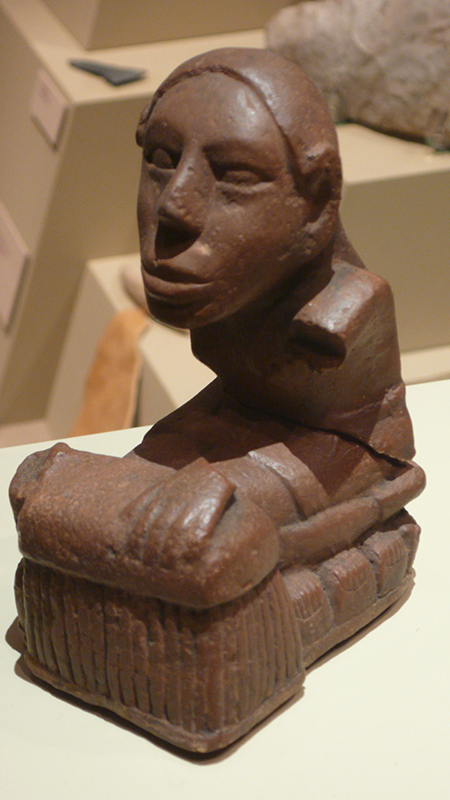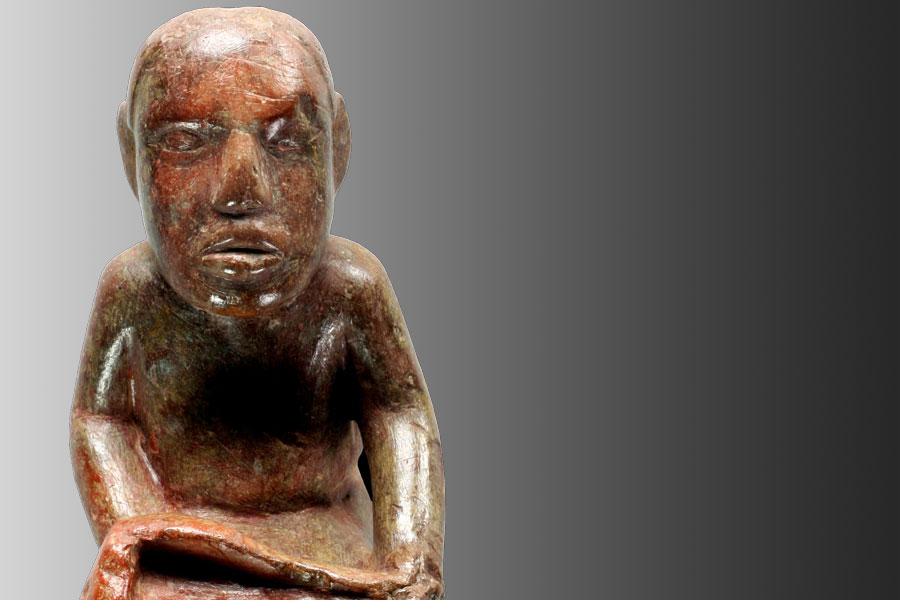Cahokia, the ancient city nestled in modern Illinois, was a thriving hub of early Mississippian civilization, known for its monumental earthen mounds and remarkable culture has received much attention by archaeologists. The impressive trade networks and agriculture have been extensively documented, but it’s critical to take note of the pivotal role women played in forming such a remarkable society. By examining flint clay figures found at Cahokia, along with other archaeological evidence, we can glean deeper insight into the lives of Cahokian women and the power they may have held within the farming system (Everding 19).
While excavating the mounds at Cahokia, archaeologists have found flint-clay statues depicting women in a distinct style to Cahokia. These figures often include plants, hoes, and other objects that represent agriculture. It’s thought that flint-clay was a rare material (Emerson & Boles 2010). The rarity of this resource is supported by the spiritually and culturally important figures that flint-clay figures show, many of whom are women. There is a woman depicted in many of these statues that has come to be known as Grandmother and Corn mother (Isselhardt 2022). Below, figure one depicts one of these statues of the Corn Goddess or Corn mother, a woman sitting upon a pile of corn cobs. Rock art from other Native American groups indicates that this figure is the same one modern Siouan speaking tribes worship (Everding 19). Archaeologists have uncovered many figures similar to this one, all expressing the same message of intrinsic female spiritual power over agriculture, and ultimately over prosperity for the society.

Some archaeologists hold that “the vast majority of Cahokia’s farmers were women” and explain that the knowledge they held of all kinds of crops solidified them in “positions of power and respect at every level of the society” (Everding 2019). It’s thought that artifacts found at Cahokia such as the flint-clay statues indicate that female farmers of Cahokia were likely praying to the often depicted Grandmother figure to aid their harvest of native grains pre-maize. Other archaeological evidence suggests the possibility that Cahokia was a matrilineal society in which women held and shared crucial knowledge through ritual feasts. (Everding 19).

Figure two above shows The Exchange Avenue Figurine was found in a temple at the north edge of the mound center. This figure is typical of the female depictions found in excavations at Cahokia. The context of this artifact indicates that Cahokian society associated female figures with the high-status temple environments, an idea that is supported by the excavation of other flint-clay objects in similar contexts (Emerson & Boles 2010). Examining what artifacts are made of, their archaeological context, and their association with each other is critical in understanding how these flint-clay representations of women depict the broader role of women in Cahokian agriculture and society. The statues allow us to broaden our conception of the kind of work women did in ancient societies, and understand the way that women held power in Cahokia.
Additional Reading
https://www.atlasobscura.com/articles/native-american-farming-cahokia
https://www.archaeology.org/news/3645-150828-cahokia-mound-72
Works Cited
Emerson, Thomas, & Boles, Steven 2010 Contextualizing flint clay Cahokia figures at the East St. Louis Mound Center. Illinois Archaeology, 22(2), 473-490.
Everding, Gerry 2020 Women shaped cuisine, culture of ancient Cahokia – the source – washington university in St. Louis. The Source. https://source.wustl.edu/2019/03/feedingcahokia/#:~:text=%E2%80%9CIt’s%20clear%20that%20the%20vast,the%20society%2C%E2%80%9D%20she%20said.
Isselhardt, Trinity 2022 Girlhood and the downfall of Cahokia. Medium. https://historymuse.medium.com/girlhood-and-the-downfall-of-cahokia-4cc76290830f#_edn5
Patton, Angela 2018 Exchange Avenue figurine survives to tell us about Cahokia. News. https://blogs.illinois.edu/view/7924/654280#image-1
Vickers, Tim 2009 Keller Figurine. Wikimedia Commons. https://commons.wikimedia.org/wiki/File:Keller_figurine.jpg
